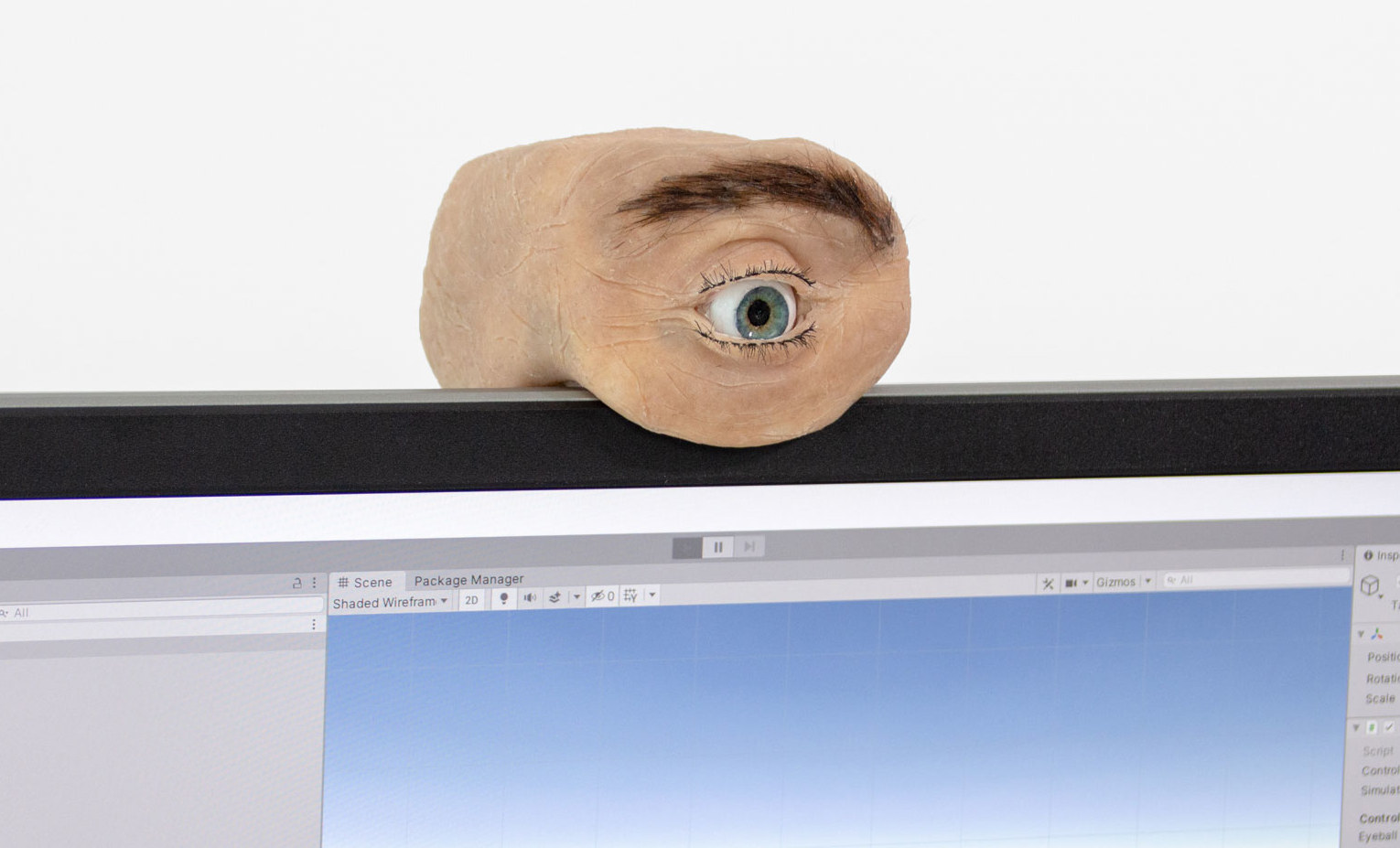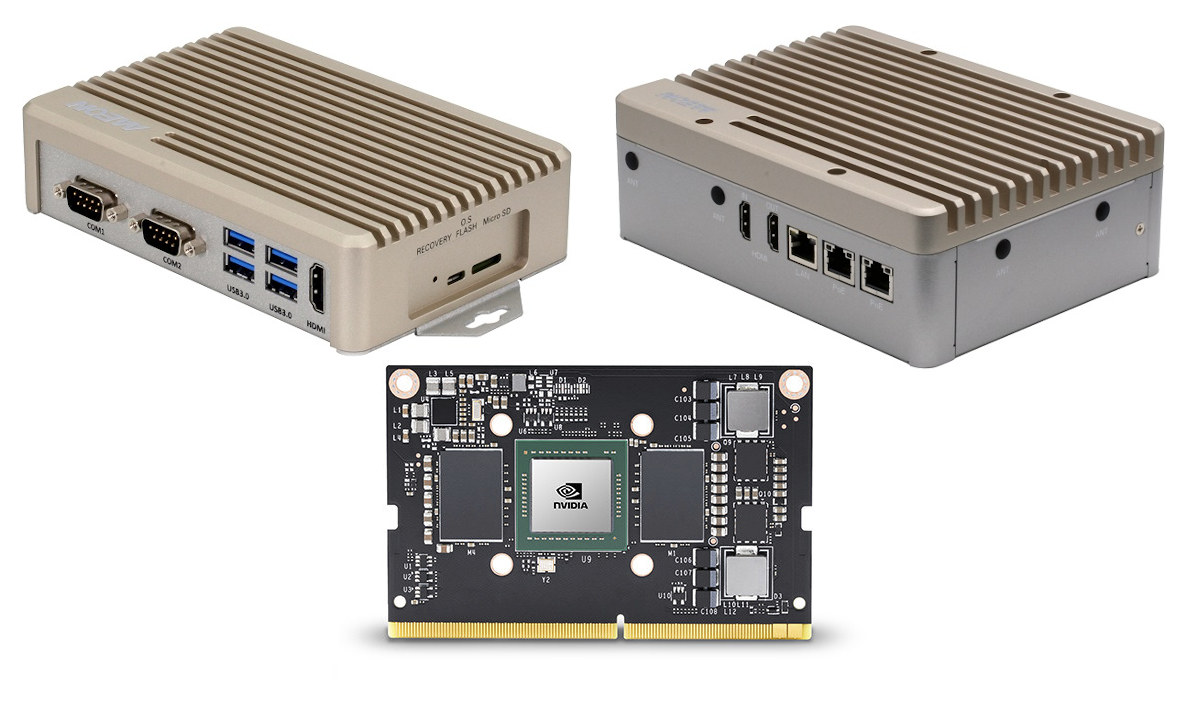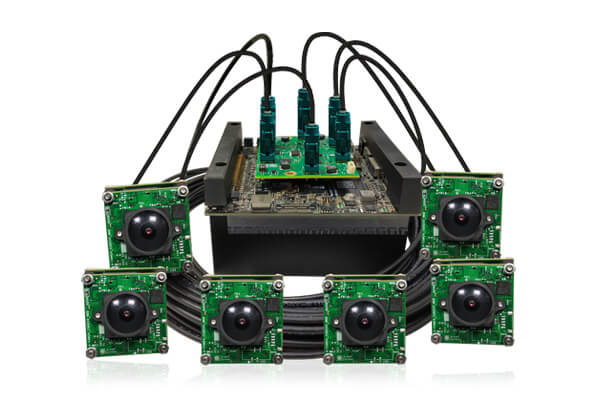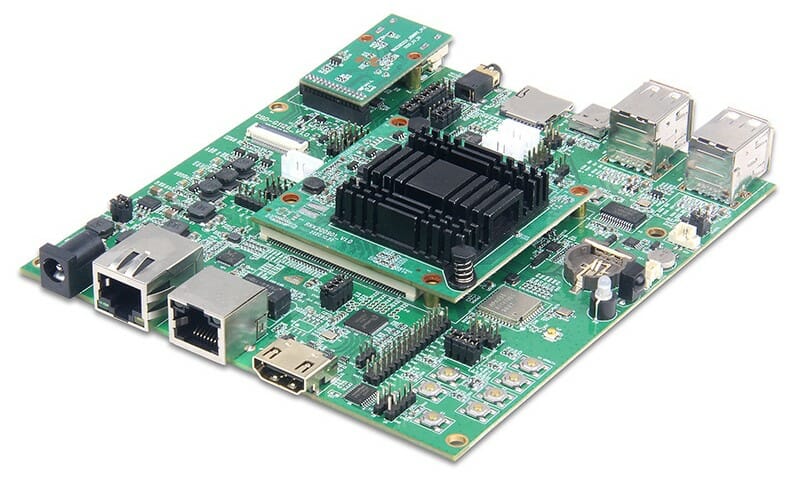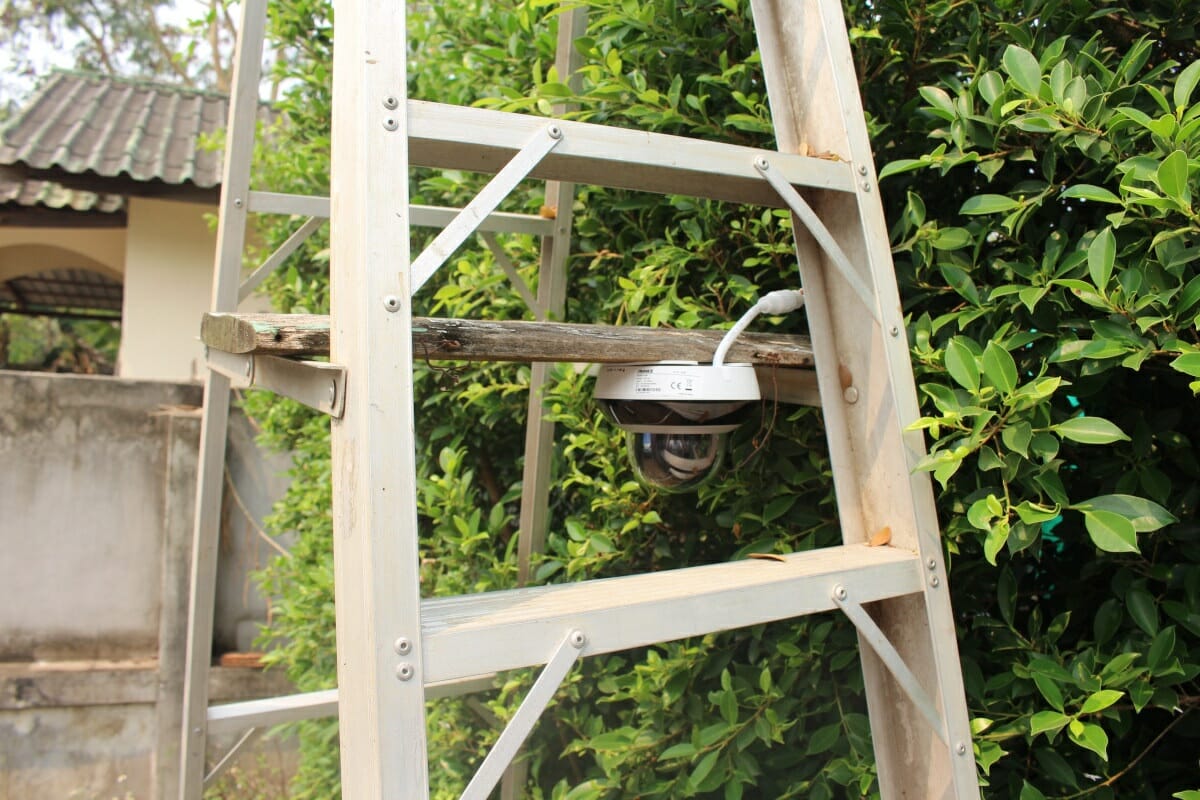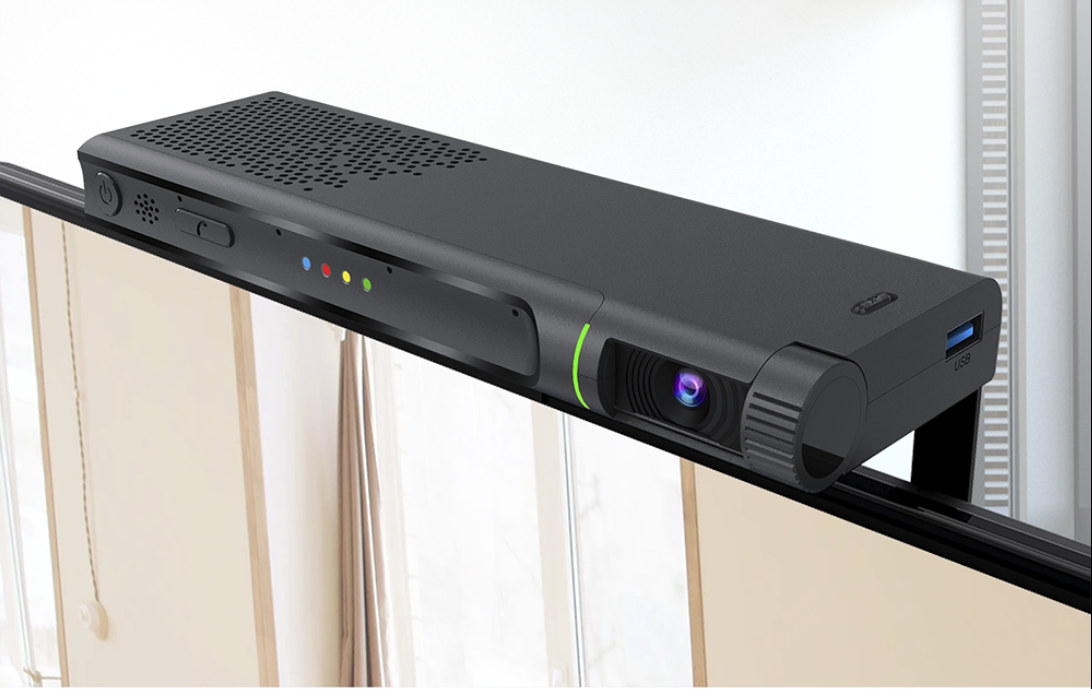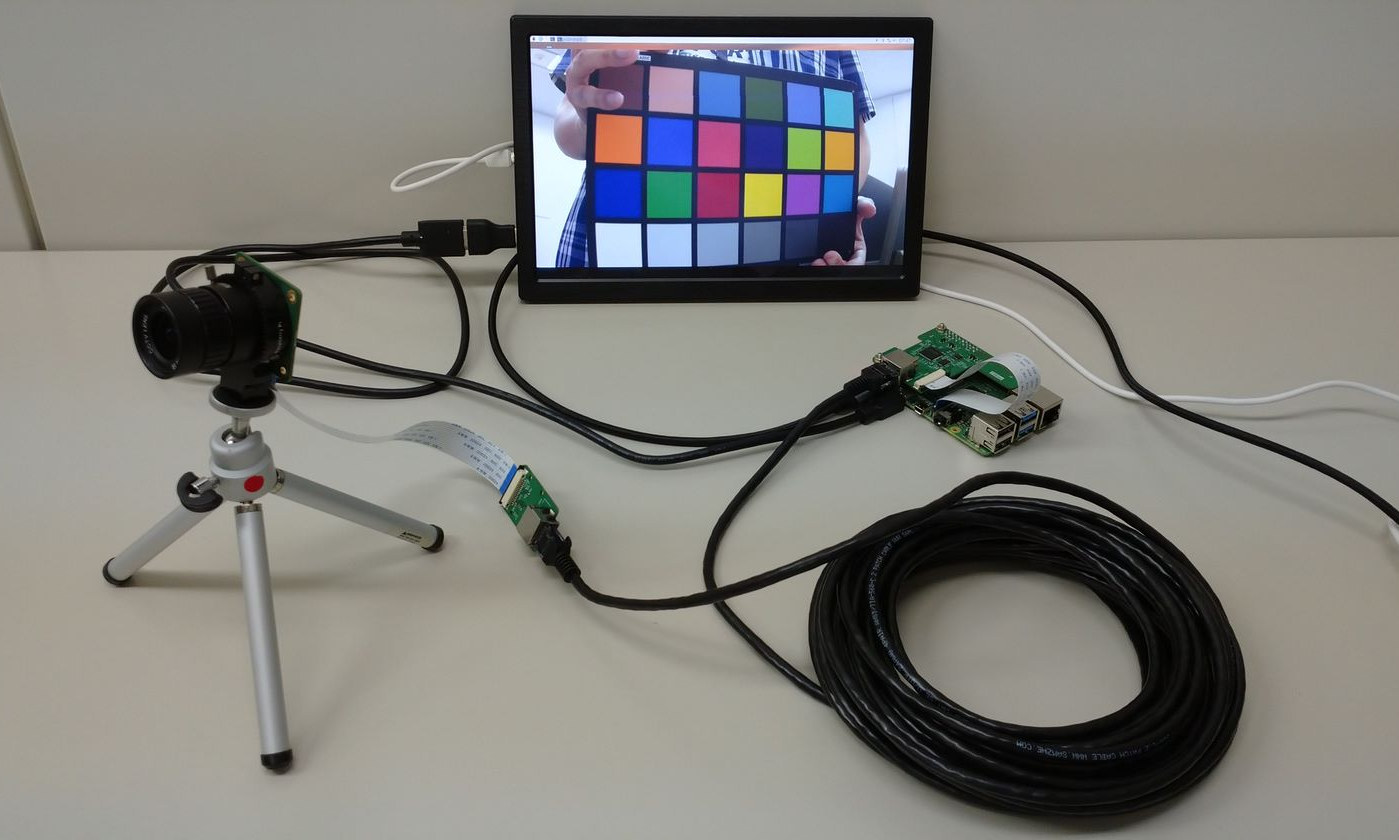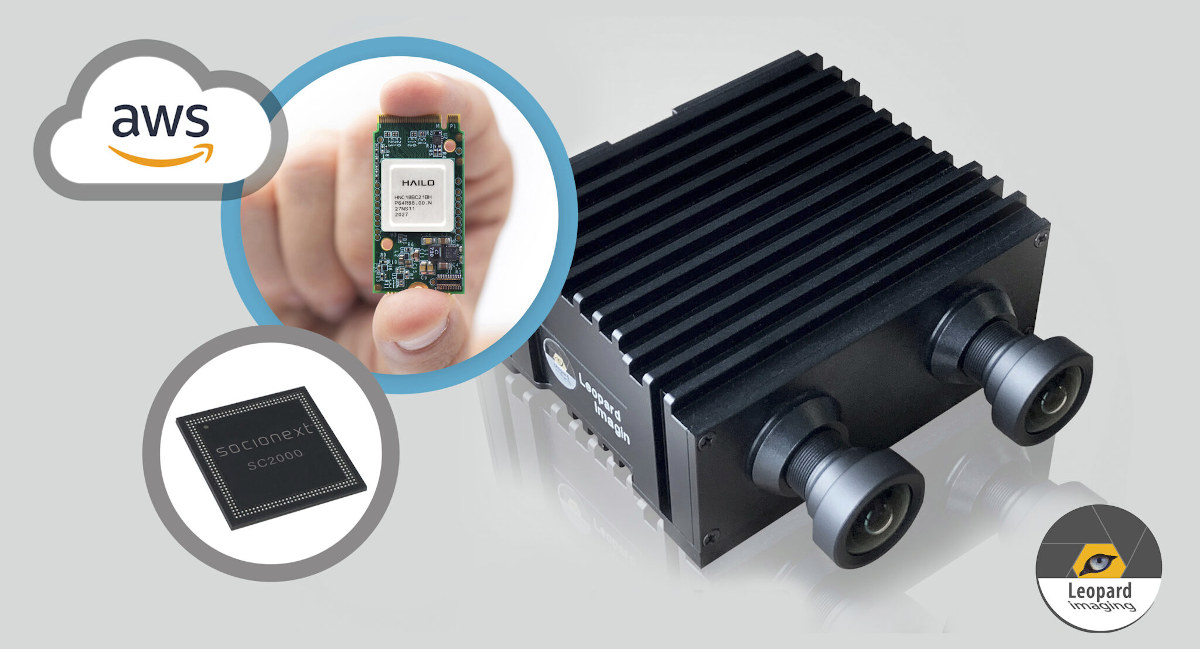Most people will use webcams connected to a computer or integrated into a laptop without thinking about the possibility of being spied on, but Eyecam will certainly raise awareness and make you feel like somebody is truly watching. The open-source webcam is shaped like a human eye and acts like one thanks to a Raspberry Pi camera and an Arduino board controlling six servos for eyeball, eyelids, and eyebrows movements. The project was conducted at Saarland University in Germany, and Eyecam looks amazingly realistic – and creepy – with the eyeball and eyelids moving, especially when face tracking is enabled, and expressions are possible with servos controlling the eyebrows. The webcam is comprised of 3D printed parts, a Raspberry Pi camera connect to Raspberry Pi Zero recognized as a USB webcam from the host, and an Arduino Leonardo Pro Micro to control the 6 servo motors. On the software side, […]
Edge AI and robotics embedded computers feature NVIDIA Jetson TX2 NX module
NVIDIA unveiled a cost-down version of the Jetson TX2 module with the Jetson TX2 NX SO-DIMM system-on-module last month, and AAEON is one of the first companies to have updated some of their products with the new module. AAEON’s BOXER-823x-series of fanless embedded computers feature the NVIDIA Jetson TX2 NX module, and multiple Ethernet ports, including some PoE capable for the development of edge AI and robotics applications. BOXER-8230AI AI Edge Fanless Embedded Box PC This model offers a mid-range alternative between the Jetson Xavier AGX NX-based BOXER-8250AI embedded box PC and the Jetson Nano-powered BOXER-8220AI mini PC both of which offer the same ports. BOXER-8230AI specifications: SoM (CPU/Memory/Storage) – NVIDIA Jetson TX2 NX with dual-core NVIDIA Denver 2 64-Bit CPU and quad-core Arm Cortex-A57 MPCore processor @ up to 2.0 GHz, 256-core NVIDIA Pascal GPU @ up to 1.3 GHz, 4GB LPDDR4, 16GB eMMC flash Storage – MicroSD card […]
GMSL2 camera kit supports 15-meter long cables, up to six cameras with NVIDIA Jetson Xavier AGX
We’ve recently seen it’s possible to use a long cable with the Raspberry Pi camera thanks to THine camera extension kit that works with 20-meter LAN cables using V-by-One HS technology. e-con Systems has now launched a similar solution for NVIDIA Jetson Xavier AGX, one of the most powerful Arm devkits available in 2021, with NileCAM21 Full HD GMSL2 HDR Camera that supports up to 15-meter long cable as well as LFM (LED Flickering Mitigation) technology. NileCAM21 camera features and specifications: Based on OnSemi AR0233 Full HD camera module with S-mount interchangeable lens holder Gigabit Multimedia Serial Link 2 (GMSL2) interface with FAKRA connector Shielded coaxial cable for transmission of power and data over long distances (up to 15m) High Dynamic Range (HDR) with LED Flickering Mitigation (LFM) Supported resolutions and max frame rates for uncompressed UYVY streaming VGA (640 x 480) up to 60 fps qHD (960 x 540) […]
Geniatech DB1126 development board features RV1126 SoC for AI applications
Since the release of Rockchip RV1126 SoC, we have covered the detailed specifications on the chip and the RV1126-based Firefly dual-lens AI camera module. To take advantage of hybrid MCU cores from ARM and RISC-V, Geniatech has announced the DB1126 development board, a new addition to their long list of ARM Embedded developer boards designed to tackle any task requiring artificial intelligence. The new Developer Board 1126 development board gets its name from Rockchip RV1126 SoC with a quad-core ARM Cortex-A7 and RISC-V MCU and a neural network acceleration with performance up to 2.0 TOPS that support INT8/ INT16. As the company says, “DB1126 is a high-performance, versatile, high-computing (2TOPS) general-purpose, intelligent integrated carrier board + core board.” The board is not just a simple development board but also a carrier board with a core board connected via a board-to-board (BTB) double groove connection. Geniatech has provided the DB1126 development […]
Annke CZ400 AI security camera reviewed with basic and smart events
At the beginning of this month, I started the review of Annke CZ400 AI security camera by listing specifications, unboxing the device, and doing a partial teardown, notably to install a MicroSD card. In theory, the camera comes with more advanced AI features than Reolink RLC-810A 4K CCTV camera that only supports people and vehicle detection, as the Annke security camera can handle face detection, line crossing, unattended baggage detection, and other smart event detections. So let’s see how it performs Annke CZ400 installation The first challenge was the installation, as I told the company I would not be willing to install the camera on the ceiling since I’m renting, and preferred wall-mounting. after checking the user manual that included a wall mount, I decided to go ahead, and get the review unit. But sadly, the wall mount is not included in the package, and Annke even told me they […]
Camera equipped Android TV 10 box supports Tiktok, video calls via Google Duo
Five or six years ago we started to see Android TV boxes with a built-in camera meant to be placed on the top of TVs, and used with Skype to Google Hangout for video calls, besides the usual video streaming features of TV boxes. The concept never really took off, as few people were interested in making video calls via a big screen TV. But with the lockdowns in the last year, there may be renewed demand as more people are stuck at home, and MECOOL Now, a Google certified video calling & media streaming device aims to fill that void, and it can also be used for business needs, for example in a conference room when connected to a video projector. MECOOL Now specifications: SoC – Amlogic S905X4 quad-core Arm Cortex-A55 processor with Arm Mali-G31 MP2 GPU System Memory – 2GB LPDDR4 Storage – 16GB eMMC flash Video Output […]
THine Raspberry Pi camera extension kit works with 20-meter LAN cables
Most applications using Raspberry Pi camera are perfectly happy to rely on the FPC flat cable connecting the Pi camera to a Raspberry Pi SBC. But for some use cases, the board and camera may have to be separated by some distance, for example, if you’d like to keep the single board computer indoor, while the camera is housed in a waterproof enclosure outside. THine Solutions has designed a cable extension kit for the Raspberry Pi camera exactly for this purpose. The kit comes with Rx and Tx boards to be connected to the board and camera respectively., as well as a 2-meter CAT5e LAN cable, but the company says the solution supports up to 20-meter Ethernet cables. THine camera extension kit content and key features: Supported cameras – Raspberry Pi camera V1.3 (for certain modes only), Raspberry Pi camera V2, and Raspberry Pi HQ camera Tx Board – Transmitter […]
Edge AI video processing system combines SocioNext SC2000 4K camera SoC with Hailo-8 AI accelerator
We’ve previously written about Hailo-8 AI accelerator delivering up to 26 TOPS at low power (3 TOPS per watt), and found in AI edge systems such as Foxconn BOXiedge server powered by a Socionext SynQuacer SC2A11 24x Cortex-A53 cores SoC and capable of analyzing up to 20 streaming camera feeds in real-time for video analytics. Leopard Imaging has now created a much more compact Edge AI processing solution with EdgeTuring based on Hailo-8 M.2 card and Socionext SC2000 4K camera SoC, and designed for low-power video analytics. EdgeTuring features and specifications: Camera SoC / Image Processor – Socionext SC2000 quad-core Cortex-A7 processor @ 650MHz with 4Kp30 H.265/H.264 encoder, up to 1.2 Gigapixel per second processing, LPDDR-3 memory (PoP) AI Module – Hailo-8 M.2 Module for up to 26 TOPS Camera Dual camera but only one sensor works for AI Sensors – 2x Sony IMX477 CMOS Image Sensor, diagonal 7.857 mm […]


